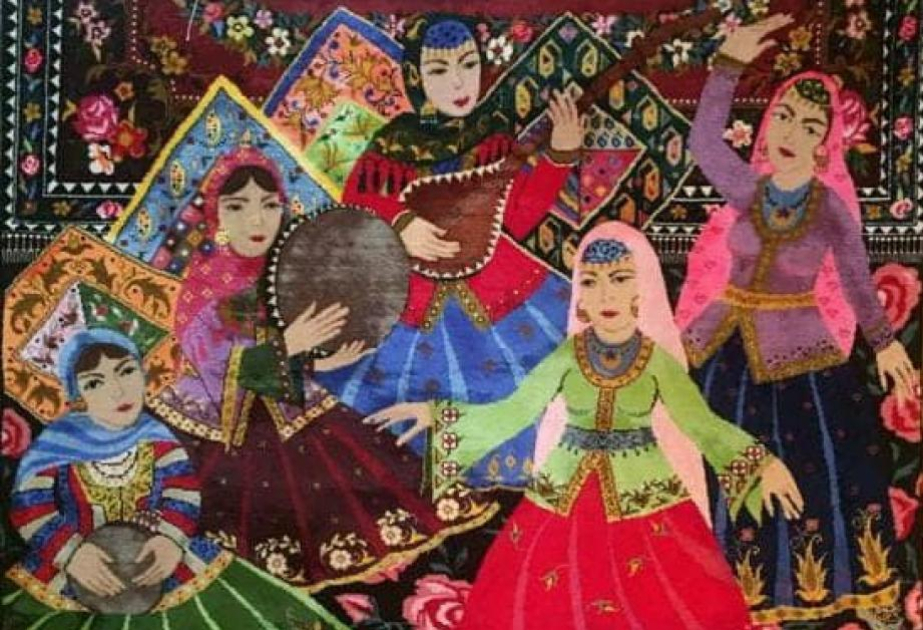Karabakh wedding customs: Traditions that have stood the test of time

Baku, February 17, AZERTAC
Throughout history, Azerbaijan’s ancient wedding customs have embodied the national spirit, way of life, and cultural values of our people. Every wedding is a sacred ceremony that unites not only two families and hearts but sometimes even two regions. In an interview with AZERTAC, Ilhama Gasabova, a leading researcher at the Institute of Folklore of the Azerbaijan National Academy of Sciences (ANAS), PhD in Philology, and Associate Professor, shared her insights on wedding traditions in Karabakh.
According to Gasabova, Karabakh weddings have always been rich in tradition and carried out in several stages. The process began with the selection of the bride. One interesting custom involved the groom’s father. If he admired a girl at a wedding, he would either pour wheat over her head or tie a small token to the end of her shawl during a dance. If the girl accepted, she would keep the token; if not, she would return it within a week.
Matchmaking in Karabakh followed strict traditions. Before the formal proposal, women from both families would meet in a ritual called “araachma.” Only after this initial meeting would the matchmaking process continue. The matchmaking itself had a three-stage process, where the groom’s family usually did not receive consent on the first attempt. If consent was given on the third attempt, the groom’s family would bring sugar to the tea table. Serving sweet tea symbolized agreement; however, if the bride’s family refused, the guests would take the sugar back.
- What interesting rituals were performed on the wedding day?
- Music, games, and fascinating rituals played an important role in Karabakh weddings. In the Aghjabadi district, for instance, zurna players would climb onto the roof of the house and play so that everyone would know where the wedding was taking place. In the Barda district, when the bride was on her way to the groom’s house, plates were placed on the stairs. She had to break all the plates with her foot before entering, as it was believed to bring prosperity to the family. In Fuzuli, it was customary for the bride to bring bread, a sheep’s leg, and a lamp as symbols of prosperity and to ward off the evil eye. Karabakh weddings also included unique traditions, such as the “praising of the groom” and the “hat game.” At the wedding’s end, the bride and groom would dance while money was sprinkled over their heads. The groom’s friends played the papag-papag (hat game), in which a hat was placed on the groom’s head, and the first person to take it was believed to be the next to marry. Additionally, a khananda (mugham singer) would perform mugham and ask relatives for gifts for the couple.
- To what extent have these customs been preserved today?
- It’s gratifying that Karabakh’s wedding customs, despite standing the test of time, have retained their true essence. Even during the 30-year occupation, families forced to leave Karabakh continued to hold their weddings according to local traditions. Today, Karabakh weddings are being revived in their native land. Since 2012, the Institute of Folklore of ANAS has been implementing the project “Collection and Systematization of Karabakh Folklore.” As part of this initiative, a 10-volume collection titled “Karabakh: Folklore is Also History” has been published, along with CDs featuring Karabakh folk songs and games.
- What steps are being taken to promote Karabakh’s culture worldwide?
- In recent years, Karabakh’s culture, including its wedding customs, has been showcased at various international events. Through the initiative of the Heydar Aliyev Foundation, Karabakh costumes have been exhibited worldwide. A striking example is the presentation of Karabakh attire during the Azerbaijani Culture Week held in Samarkand. These efforts are crucial for preserving our cultural heritage and countering Armenian propaganda.





